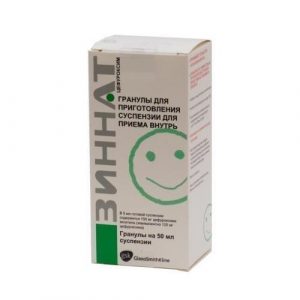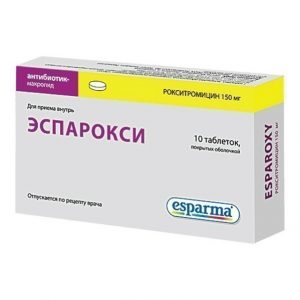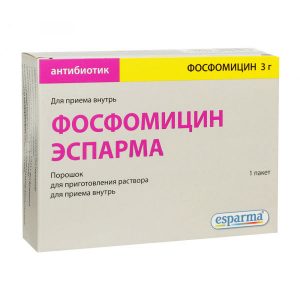Description
Pharmacological action
Antimicrobial agent with a wide spectrum of action of the fluoroquinolone group. It has a bactericidal effect. Suppresses DNA gyrase and inhibits the synthesis of bacterial DNA.
Highly active against most gram-negative bacteria: Pseudomonas aeruginosa, Haemophilus influenzae, Escherichia coli, Shigella spp., Salmonella spp., Neisseria meningitidis, Neisseria gonorrhoeae.
Active against Staphylococcus spp. (including strains producing and not producing penicillinase, methicillin-resistant strains), some strains of Enterococcus spp., Campylobacter spp., Legionella spp., Mycoplasma spp., Chlamydia spp., Mycobacterium spp.
Ciprofloxacin is active against bacteria producing -lactamases.
Ureaplasma urealyticum, Clostridium difficile, Nocardia asteroides are resistant to ciprofloxacin. The action against Treponema pallidum is not well understood.
Indications
Infectious and inflammatory diseases caused by microorganisms sensitive to ciprofloxacin, incl. diseases of the respiratory tract, abdominal cavity and pelvic organs, bones, joints, skin, septicemia, severe infections of ENT organs. Treatment of postoperative infections. Prevention and treatment of infections in patients with reduced immunity.
For topical use: acute and subacute conjunctivitis, blepharoconjunctivitis, blepharitis, bacterial corneal ulcers, keratitis, keratoconjunctivitis, chronic dacryocystitis, meibomites. Infectious eye lesions after injuries or foreign bodies. Preoperative prophylaxis in ophthalmosurgery.
Contraindications
Pregnancy, lactation (breastfeeding), children and adolescents under 18 years of age, hypersensitivity to ciprofloxacin and other quinolone drugs.
Recommended use for
Individual. Inside – 250-750 mg 2 times / day. The duration of treatment is from 7-10 days to 4 weeks.
For intravenous administration, a single dose is 200-400 mg, the frequency of administration is 2 times / day, the duration of treatment is 1-2 weeks, if necessary more. It is possible to administer iv in a jet, but more preferably, droplet administration for 30 minutes.
In case of local application, 1-2 drops are instilled into the lower conjunctival sac of the affected eye every 1-4 hours. After improvement, the intervals between instillations can be increased.
The maximum daily dose for adults when taken orally is 1.5 g.
Special instructions
Dosage adjustment is required in patients with impaired renal function. It is used with caution in elderly patients, with atherosclerosis of cerebral vessels, cerebrovascular accident, epilepsy, convulsive syndrome of unknown etiology.
During treatment, patients should receive a sufficient amount of fluid.
In case of persistent diarrhea, ciprofloxacin should be discontinued.
With simultaneous iv administration of ciprofloxacin and barbiturates, control of heart rate, blood pressure, ECG is necessary. During treatment, it is necessary to control the concentration of urea, creatinine, and hepatic transaminases in the blood.
During treatment, a decrease in reactivity is possible (especially when used concomitantly with alcohol).
Ciprofloxacin is not allowed to be administered subconjunctively or directly into the anterior chamber of the eye.
Composition
Per tablet:
Active ingredient: ciprofloxacin hydrochloride – 582.20 mg (in terms of ciprofloxacin – 500.00 mg)
Excipients of the tablet core: corn starch – 7, 20 mg partially pregelatinized corn starch (Starch 1500) – 60.00 mg microcrystalline cellulose – 86.20 mg crospovidone (collidone CL) – 15.40 mg magnesium stearate – 7.60 mg lactose monohydrate – 26.60 m talc – 14, 80 mg
Film excipients: hypromellose – 11.56 mg polyethylene glycol 6000 – 4.88 mg titanium dioxide – 1.78 mg polysorbate 80 – 1.78 mg.
Side effects of the
From the digestive system: nausea, vomiting, diarrhea, abdominal pain, increased activity of hepatic transaminases, alkaline phosphatase, LDH, bilirubin, pseudomembranous colitis.
From the side of the central nervous system: headache, dizziness, feeling tired, sleep disturbances, nightmares, hallucinations, fainting, visual disturbances.
From the urinary system: crystalluria, glomerulonephritis, dysuria, polyuria, albuminuria, hematuria, a transient increase in serum creatinine.
From the hemopoietic system: eosinophilia, leukopenia, neutropenia, a change in platelet count.
From the side of the cardiovascular system: tachycardia, cardiac arrhythmias, arterial hypotension.
Allergic reactions: pruritus, urticaria, Quincke’s edema, Stevens-Johnson syndrome, arthralgia.
Adverse reactions associated with chemotherapeutic effect: candidiasis.
Local reactions: pain, phlebitis (with iv administration). When applying eye drops, in some cases mild soreness and conjunctival hyperemia are possible.
Other: vasculitis.
active substance
Ciprofloxacin
dosage form
tablets
Appointment
Vzrosl m on purpose doctor



